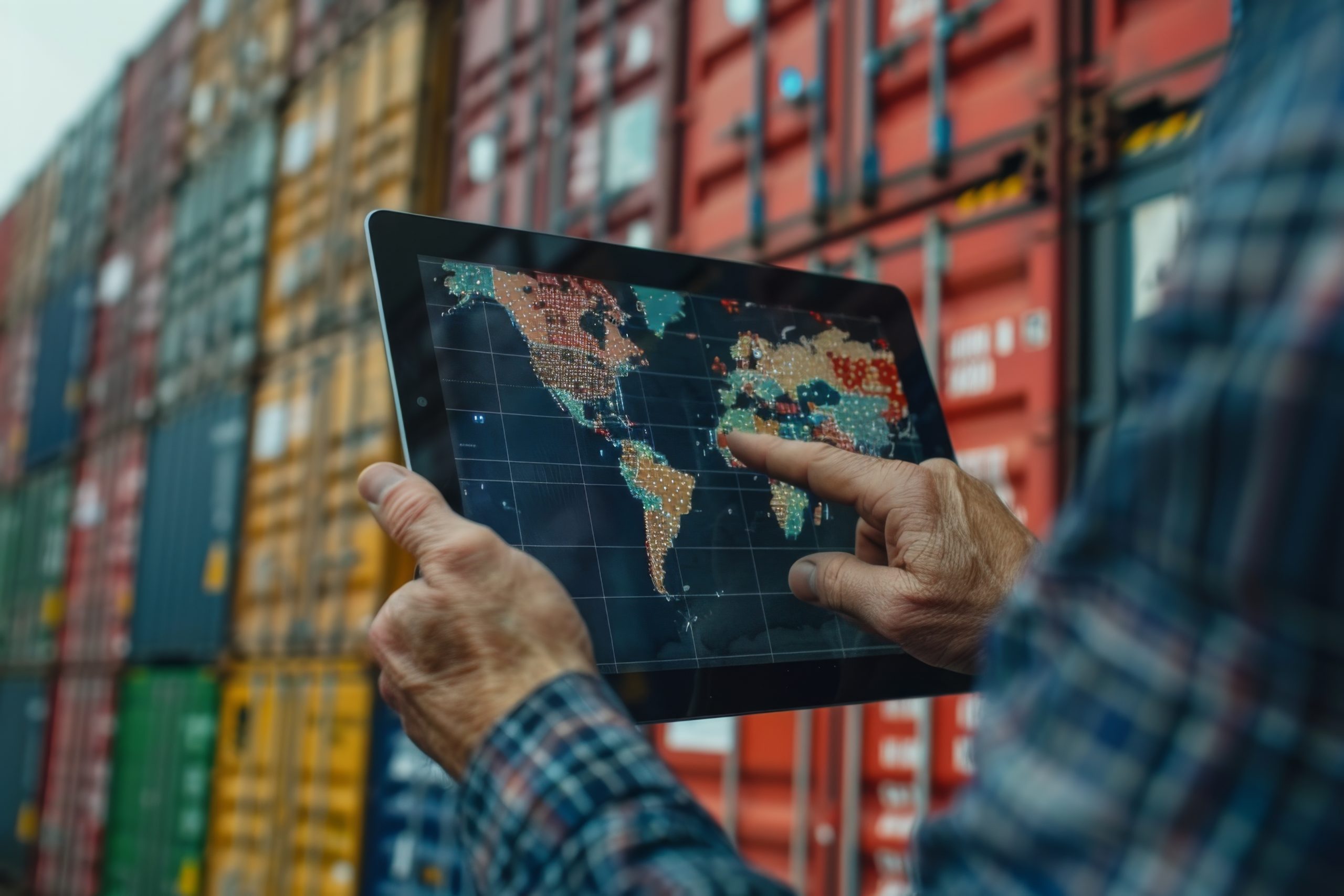Master food importing with expert strategies, real-world examples, and cutting-edge technology.
Tyler Overmier |Reading time: 10 minutes
Table of Contents
Navigating the Complexities using real life examples
Regulations
Dealing with US regulations might feel like jumping through hoops, but it’s an essential part of the food import business. Whether you’re bringing in French cheeses, Italian wines, or fresh produce from Mexico, each product has its own set of rules to follow. Keeping up with changing regulations is no small feat, but it’s crucial to avoid delays, fines, or even losing entire shipments. From understanding intricate labeling requirements to ensuring product safety and traceability, the process demands meticulous attention to detail.
Navigating US food import regulations is a challenge, but it’s essential for success. Whether importing French cheeses, Italian wines, or Mexican produce, each product comes with specific rules. Compliance is crucial to avoid delays, fines, or lost shipments. From complex labeling to product safety, meticulous attention is required.
The Cheese Conundrum: Soft, unpasteurized cheeses face strict FDA regulations, and every food category has its own import hurdles. Importers must manage tariffs, quotas, and detailed packaging standards.
To thrive, businesses need a strong grasp of regulations, a solid supply chain, and expert support. Partnering with experienced customs brokers and using advanced technology can help overcome obstacles and ensure products reach the US market smoothly.

Visibility
Don’t Lose Sight of Your Goods
In today’s fast-paced food industry, supply chain visibility is not just a luxury; it’s a necessity. Understanding and tracking every step of your supply chain, including the import process, is crucial for maintaining quality, ensuring compliance, and staying competitive.
Why Supply Chain Visibility Matters
- Ensure Food Safety and Compliance: With visibility, you can monitor your supply chain to ensure all products meet safety standards and regulations, reducing the risk of costly recalls.
- Increase Efficiency and Reduce Costs: Real-time insights allow you to optimize inventory, minimize waste, and reduce transportation costs.
- Enhance Responsiveness: Stay agile and responsive to disruptions, ensuring your products reach customers fresh and on time.
- Build Stronger Partnerships: Transparent supply chains lead to better collaboration with suppliers and logistics partners, fostering trust and reliability.
The Risks of Poor Visibility
Without proper visibility, food companies face increased risks of non-compliance, higher operational costs, and dissatisfied customers. The inability to quickly respond to disruptions can lead to financial losses and a damaged reputation.
How to Achieve Supply Chain Visibility
- Implement Advanced ERP Systems: Use platforms like SAP Business One to integrate data and provide real-time insights across your supply chain.
- Leverage IoT and Data Analytics: Monitor products in transit and analyze data to predict trends and optimize processes.
- Partner with Reliable Logistics Providers: Choose partners that offer transparent tracking and are committed to sharing data.
- For food companies, supply chain visibility is key to maintaining quality, efficiency, and customer satisfaction. By embracing the right technologies and partnerships, you can ensure your supply chain is transparent, efficient, and resilient.
Interesting Fact
Did you know that between 2011 and 2021, 35% of all vegetables consumed in the U.S. were imported? Mexico alone shipped $2.5 billion worth of tomatoes to the U.S. in 2020!
Inventory Management
The Delicate Balance
Managing inventory is a bit like walking a tightrope—too much stock, and you’re stuck with waste; too little, and you risk empty shelves and unhappy customers. For food importers, this balance is even more critical, especially when dealing with perishable goods like fruits, vegetables, and dairy products. For a very real example, please check the story about Chestnut Hills Farms where you can find the details of how they manage their entire operation and the technologies to be applied.
Fun Fact
Fruits and nuts imports made up 44% of U.S. domestic consumption from 2011 to 2021. That’s a lot of fruit salads relying on the right import strategies!

Protecting your bottom line: Cost Management
Importing food involves a lot of costs—shipping, customs duties, storage, distribution, and more. These costs can fluctuate based on fuel prices, currency exchange rates, and seasonal demand. Efficiently managing these landed costs is key to maintaining healthy profit margins.
An importer of premium wines from Europe has to navigate fluctuating shipping costs and exchange rates. With the right strategies, they can keep their pricing competitive while protecting their profit margins.
Cool Stat
In 2020, the U.S. imported $8.7 billion worth of meat, with Canada being the largest source of imported beef. That’s a whole lot of steak to manage!
Traceability and Quality Control
In today’s market, consumers want to know exactly where their food comes from. Traceability isn’t just a regulatory requirement; it’s also a way to build trust and ensure that your products meet high standards. This is especially important for premium products like wines and cheeses, where quality is closely tied to origin.
How import food companies can trace food from farm to table
At the Farm:
- Track Origin and Harvest: Record where and when the food is grown and harvested.
- Initial Quality Check: Ensure the produce meets safety and quality standards before it leaves the farm.
During Transportation:
- Monitor Conditions: Use GPS to track shipments and sensors to check temperature and humidity, ensuring the food stays fresh.
- Apply Quality Control: Inspect the goods upon arrival to make sure they’re still in good condition.
At Processing and Packaging:
- Assign Batch Numbers: Label products with batch numbers to track them easily through the supply chain.
- Conduct Quality Inspections: Check the products during processing to ensure they’re safe and meet standards.
In Warehouses:
- Use Inventory Systems: Track where and how the products are stored, ensuring they’re kept under the right conditions.
- Perform Regular Quality Checks: Make sure the food stays fresh and uncontaminated during storage.
Final Delivery to Retailers or Consumers:
- Track to the Final Destination: Monitor the product until it reaches the retailer or consumer.
- Final Quality Control: Inspect the goods before they’re sold or delivered to make sure they’re in top condition.
Fun Fact
The U.S. is one of the world’s largest food importers, with agricultural imports rising to $194 billion in 2022. The largest categories include horticultural products like fruits, vegetables, tree nuts, and tropical products.
Success Story:
How EZ Container Transformed
One Importer’s Business
For a leading importer of consumer-packaged goods, managing the complexities of the import process was a daily struggle. From tracking landed costs to ensuring timely deliveries, the lack of a centralized system often led to unexpected expenses and inefficiencies.
That all changed when they implemented EZ Container, powered by SAP Business One. With this powerful tool, they brought all their import operations into one platform, gaining complete visibility and control over their supply chain.
Key Benefits
Accurate Landed Cost Tracking: EZ Container allowed them to precisely calculate all import-related expenses, from shipping and duties to storage fees. This accurate cost tracking enabled them to set competitive prices while safeguarding their profit margins.
Real-Time Visibility: They could monitor their shipments in real-time, avoiding delays and ensuring that their products arrived on time and in optimal condition.
Streamlined Operations: By automating routine tasks and centralizing documentation, they significantly reduced the time spent on administrative work, freeing up resources to focus on strategic growth.
Same happen when importing specialty cheeses from Europe or premium wines from Italy, these businesses can now factor in all variable costs, including fluctuating tariffs and shipping rates. EZ Container allow them to maintain consistent pricing and ensure product availability, even in a volatile market.
EZ Container didn’t just streamline their import operations; it transformed their entire business, providing them with the tools and insights they needed to overcome challenges and optimize their supply chain for long-term success. This example highlights how food importers can leverage technology like EZ Container to enhance efficiency, reduce costs, and gain a competitive edge.
Call 911-FoodTech
In the fast-paced world of food imports, having the right tools can make all the difference. EZ Container and SAP Business One are the secret weapons for overcoming challenges, seizing opportunities, and driving your business toward long-term success.
Start your journey towards efficient, cost-effective import management now! Get in touch for a free consultation today!
